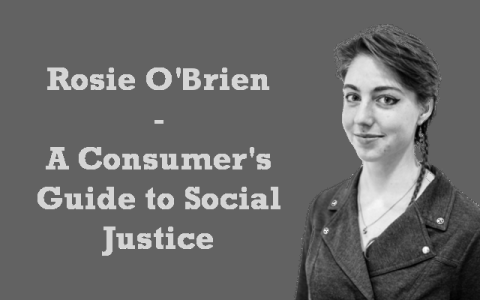 Today’s global floral industry is not designed for lovers. Relatively recent historical and cultural shifts have gradually led imported floricultural products to become the antithesis of socially just economics everywhere, especially Central America.
Today’s global floral industry is not designed for lovers. Relatively recent historical and cultural shifts have gradually led imported floricultural products to become the antithesis of socially just economics everywhere, especially Central America.
Though their neatly trimmed bouquets would suggest otherwise, there is nothing beautiful about the modern narrative of floriculture businesses as they mass-produce arrangements of chemically treated blossoms from 3,000 miles away. As consumers, we might not think twice about the value of fresh bouquets on display in a local store or in an office space today, but historical price changes indicate a more sinister economic theme.
In 1936, even as the United States was recovering from the Great Depression, one newspaper advertisement in New York was asking 26 dollars for a dozen roses, accounting for inflation. Today, Americans only spend around 10 dollars for the same product, despite a steady increase in middle-class expendable income. But American consumers are not bearing the brunt of this shift in costs.
U.S. businesses can sustain low prices for imported fresh flowers because the industry’s shifts in modes of production disproportionately push the burden of the extra costs in growing, processing and shipping onto those at the bottom of the supply chain. Keeping the price of cut flowers artificially low comes at an immense global cost, but it is the workers who harvest and process these flowers as well as the earth itself that suffer from the emotionless economics of commercialized floral production.
According to “Latin America and Global Capitalism” by William Robinson, three out of every four flowers in the United States now come from Colombia. As multi-national corporations became more ubiquitous, Central American nations undertook unprecedented increases in non-traditional agricultural enterprises, including the mass-production of fresh flowers for export to the growing market in the United States.
This shift in production has led to increased suffering among the predominantly female laborers trapped by floricultural work in Colombia, Nicaragua, Honduras, Guatemala and Mexico. Right now, workers are paid minimum wage at best, and several reports estimate that they are exposed to over 100 different types of chemicals throughout the day (as documented in John McQuaid’s “The Secrets Behind Your Flowers”). Processing methods require modern assembly-line techniques that cause repeated stress injuries, often with no promise of compensation for time off. Workers are fired for attempting to unionize.
Furthermore, the process of cutting, arranging and shipping fresh flowers requires intense refrigeration techniques from field to store, sapping natural resources just to keep dying flowers in suspension between life and death long enough to be sold at a supermarket in the United States. Colombia, like the American Midwest, is experiencing a rapid depletion in groundwater, yet its economy is dominated by an industry that, according to a study of Kenyan flower production by the University of Twente, requires around three gallons of water to produce a single rose blossom.
To change our personal relationships to such an environmentally and socially toxic commercial process, we need to shift dominant cultural attitudes that have kept us happily buying flowers without considering the deep irony of the industry: that we purchase these beautiful plants to express positive emotions, yet we often fail to acknowledge that they were brought to us by exploitative, mechanized, chemical processes that damage the earth and human lives.
Capitalism has gradually reduced the significance of beautiful, natural flowers to the same calculated fate as any commodity: either consumption is up (good), or consumption is down (bad). If consumption is down, something must be fixed. Under capitalism, these “fixes” almost never benefit those at the bottom who work the hardest to deliver such delicate, living plants to our stores.
Reexamine the ways in which American consumer culture tends to conflate commoditized flowers and emotional interaction. What other objects can we use to decorate our spaces, comfort our loved ones or show our affection for others? Why does popular culture insist that a rose is more beautiful than a stalk of wheat?
The first step in restoring the modern flower industry is to begin considering, for example, the importance of locally grown flowers and plants, changing our perceptions of a conventionally beautiful flower according to measures of social justice and environmental sustainability, particularly in prairieland such as Iowa. Only by asking ourselves larger questions can we begin to break down the systems that keep us locked into the floral industry’s unjust, unsustainable pattern of exploitation and commodification of living beings.



























































